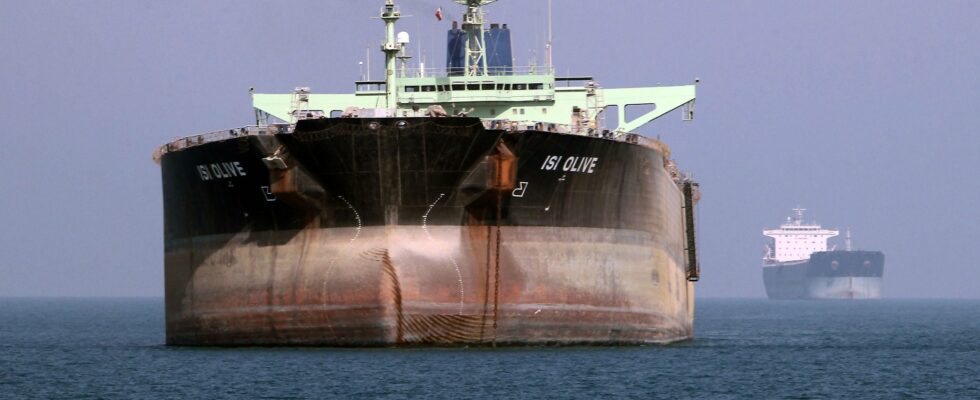In the space of a few hours, the price of oil plummets. Around 11:55 a.m. (Paris time), this Tuesday, October 15, the price of a barrel of Brent from the North Sea, for delivery in December, fell by 5.02% to $73.57. While its American equivalent, a barrel of West Texas Intermediate (WTI), for delivery in November, slipped by 5.19%, to $70.00.
The previous day’s price decline accelerated after the publication of an article from Washington Postwhich argues that Israeli Prime Minister Benjamin Netanyahu told the Biden administration that he was prepared to strike military rather than oil or nuclear facilities in Iran, according to two officials familiar with the matter, suggesting a more limited counterattack aimed at to prevent a full-scale war.
Prices fluctuate depending on political speeches
The evolution of oil prices “will now depend on the extent to which the market believes in this new conciliatory political discourse”, told AFP John Evans, analyst at PVM Energy. An Israeli strike on Iranian oil facilities could drive up energy prices, according to various analysts cited by the Washington Post. However, an attack on the country’s nuclear research program could erase all remaining red lines in the conflict between Israel and Tehran, triggering a new escalation and risking a more direct military role for the United States, analyzes the American daily .
At the beginning of October, oil prices had conversely soared in tune with market concerns about possible Israeli strikes on Iranian infrastructure. Both varieties (Brent from the North Sea and West Texas Intermediate) had returned to their highest levels in a month. The statements, on the fly, of American President Joe Biden, during a brief exchange with the press, then panicked the market. Asked about his position regarding a possible attack by Israel on oil sites in Iran, the head of state replied that he was “in discussions” with the Israeli government on the subject. “I think it would be a bit… Anyway,” Joe Biden continued, evasively, about Israel’s expected response to the hundred Iranian missiles that targeted its territory.
Fall in demand for oil
Iran produced 3.4 million barrels per day in August, according to the International Energy Agency (IEA). In the event of damage to its infrastructure, Iran could “close the Strait of Hormuz”, the only crossing point for maritime exports from several major producers in the Middle East, analysts say. Precedents for major attacks on oil infrastructure are rare.
If the escalation in the Middle East is very real, many see in the movements observed over the past three days on the crude market the result of a panic movement by speculative operators. Many of them were, in fact, betting downward on prices due to the mixed outlook for demand in 2025. And for good reason: if OPEC + (Organization of the Petroleum Exporting Countries and their allies), usually optimistic about demand, still banking on growth, its latest monthly report published Monday October 14 revises its previous forecasts downwards. The market thus remains weighed down by the lack of strength in demand and the prospect of an increase in production by OPEC and its allies in the OPEC + agreement from December. For 2025, OPEC + is counting on global consumption of 105.7 million barrels per day, where it previously counted on 210,000 barrels more.
In addition, the escalation of tensions in the region has not resulted at this stage in disruptions to supply, in a market which remains “sufficiently supplied”, indicated Tuesday the IEA, which said it was ready to “act” in the event of significant difficulty. Several factors helped “stabilize markets”, such as “the resolution of a political conflict in Libya that briefly halved its oil exports, relatively modest production losses due to major hurricanes” in the United States and ” low demand. “The IEA stands ready to act in the event of a significant disruption to supply – and if market conditions justify it,” a spokesperson told AFP. According to the IEA, the world can count on significant oil stocks. “For now, supply continues to flow and, absent a major disruption, the market will face a considerable surplus” in 2025, she notes.
